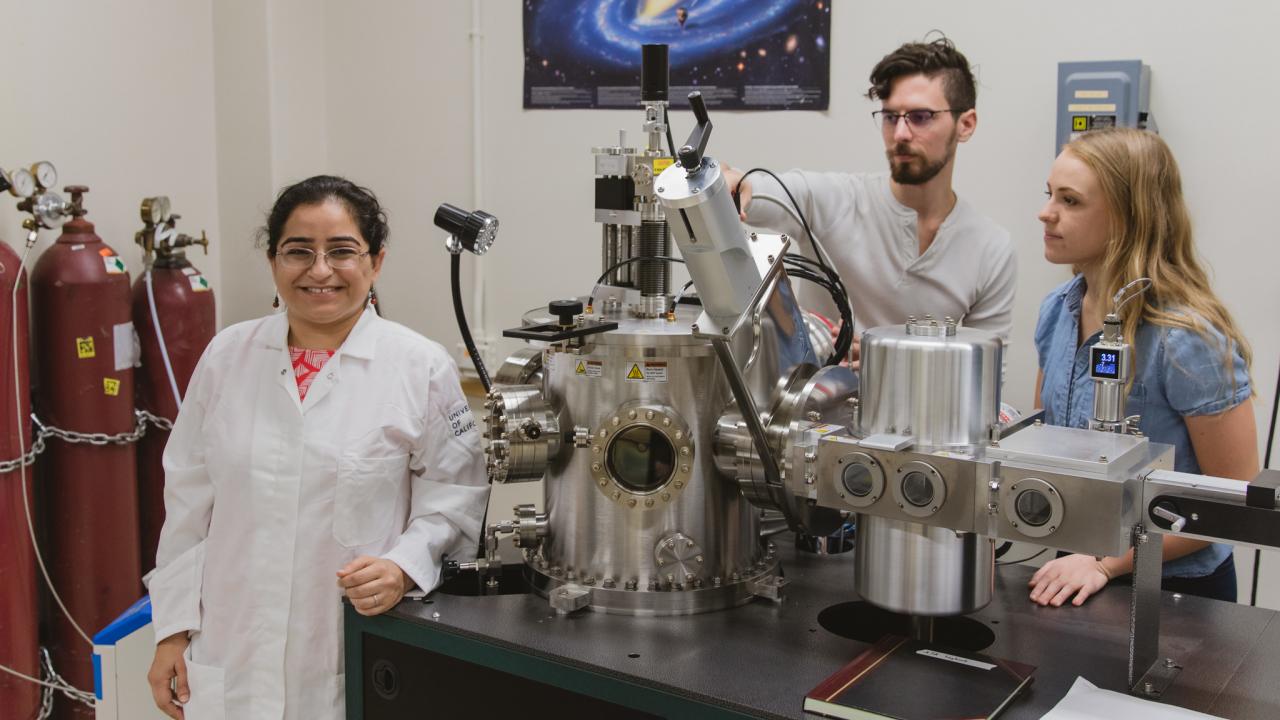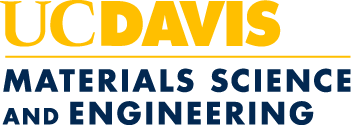
Roopali Kukreja: Solving the Puzzles of Magnetic Materials
Since studying engineering in college, Assistant Professor Roopali Kukreja has been fascinated with how and why people choose different materials for different applications. Learning about various materials gave her a greater appreciation for the field of materials science and engineering and she has stuck with it since. Now a faculty member at UC Davis, she works to understand the dynamics in magnetic materials.
At UC Davis, her research group focuses on understanding electronic and magnetic properties of materials. To do this, they use x-rays to see how they behave at the nanoscale and at femtosecond (1x10-15 second) time intervals. Understanding how magnetic and electronic properties of materials change when exposed to external stimuli such as lasers is the first step towards learning how to manipulate them for different applications, especially in computing.
“My favorite part of engineering is when everything starts to fits together, like when you’re doing a jigsaw puzzle and you finally get the complete picture,” she said. “You figure out one piece, then another and another, and suddenly, after six months, you realize, ‘wait, all of them are connected.’”
Diverse Research
One of the puzzles she is trying to solve is understanding magnetic interactions in complex four-to-five-element alloys. Kukreja and her team know that these alloys are magnetic, but not which magnetic classes they belong to and how magnetic interactions are at work between the elements. To learn more about these materials, they are using x-rays tools to look at each element individually to determine the magnetic properties of the whole material.
Her lab is also experimenting with terahertz lasers that can excite magnetism at the femtosecond. If the team can switch the magnet from north-south to south-north orientation reliably, it can be used in a logic switch with the potential to greatly increase computing speed.
Finally, she is looking at what happens during the phase transitions in complex oxides using in-situ x-ray measurements, which track the change in material properties while the phase transition occurs. Using a combination of x-ray diffraction and imaging, her team can map out what’s happening across the material during a phase transition with a 25 nm resolution.
Even when the progress is slow and things get frustrating, Kukreja enjoys the process and working with her team to find solutions. “I love working with students, doing x-ray experiments late into the night and overcoming experimental challenges,” she said.
At Home in the Department
Born and raised in India, she received a B.Tech. in materials science from the Indian Institute of Technology, Bombay before coming to the U.S. to receive her M.S. and Ph.D. in materials science and engineering from Stanford University. After completing her postdoctoral work at UC San Diego, she decided she wanted to stay in California and in the UC system and she joined UC Davis in 2016.
“I really like the collaborative nature of my department,” she said. “Working with the colleagues here is very nice and the department is tremendously supportive of new faculty like me.”
In turn, she has been extremely supportive of the department since she was hired. As the first new faculty member to join the department after it became independent, she immediately became involved with developing curriculum and planning the department’s identity and goals with her colleagues. She is also a mentor for AvenueE initiative of college of engineering.
Kukreja received the 2019 Air Force Young Investigator Research grant to investigate dynamics in magnetic heterostructures and has collaborated with researchers from national research laboratories such as SLAC National Accelerator Laboratory in Menlo Park and Brookhaven National Laboratory in Long Island.
Related:
Roopali Kukreja receives 2019 Air Force Young Investigator Research grant
Roopali Kukreja Reveals Two-Step Process in Magnetite’s Metal-Insulator Transition
